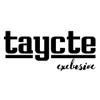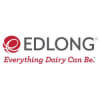While it isn't easy for CPG companies to switch to sustainable packaging, it's an increasingly important and necessary step as more environmentally conscious consumers factor that into their buying decisions.
At the same time, the containers, bags and other packaging used for today's products have come into focus as shoppers are snacking and eating more of their favorite foods on the go. To meet these needs, food and beverage manufacturers are turning to companies such as Tetra Pak to bring them more in tune with consumer demands and evolving trends.
The food packaging company has worked with U.S. brands like Kahlua Coffee Creamers, Gossner Foods and Healthy Living to create products such as aseptic carton bottles and Tetra Pak Artistry that allow brands to jazz up the look and feel of their product.
In an emailed response to questions, Gustaf Rabe, the company's VP of aseptic sales in the U.S. and Canada, discusses the sustainable packaging trend, what Tetra Pak's plan is for the future and how its business has changed in recent years.

FOOD DIVE: What has Tetra Pak developed recently?
GUSTAF RABE: One interesting area we’ve had a lot of recent development is in packaging material effects. Earlier this year, we launched a suite of new effects called Tetra Pak Artistry, which is designed to help food and beverage producers revitalize the look and feel of their products to attract shoppers’ attention, all without the need to switch to a new packaging format or invest in new equipment.
If you look at package shapes and sizes, the most recent Tetra Pak package to hit the U.S./Canada market is the Tetra Prisma Aseptic Edge 250 ml with our DreamCap closure. This was launched in late 2017 and provides a great on-the-go drinking experience in a smaller portion size. We are also very excited about our new E-beam technology for our filling machines. This new technology saves on resources while also allowing for faster speeds. Finally, we continue to invest in increasing the sustainability of our packages with developments like plant-based plastics sourced from sugar cane.
What are you looking at when it comes to renewable materials?
RABE: We have many ongoing developments in the works to further increase the share of renewable materials in our packages. One example that we announced earlier this year is the development of a paper straw for our portion packs.

How has business changed? How has it grown?
RABE: Tetra Pak’s business in the U.S. and Canada continues to grow and, as the food and beverage industry continues to evolve, we’re seeing lots of new growth channels. A great example of this is in the RTD nutritional space with brands like Premier Nutrition. Another area where we are seeing interest and growth in the water category. Although that volume base (in carton) is still relatively small, the growing momentum around more sustainable and environmentally friendly packages for water is gaining traction. Brands such as Flow Water, JUST Water and Rethink Water are getting a lot of attention. Overall, current market and demographic trends are leading to increased interest and demand for carton packages. This can be seen in categories like pet food where new demands for high quality protects are driving conversion. It’s a very exciting time to be in the packaging business! It is not only milk and juice anymore.
What are Tetra Pak's plans for the future?
RABE: For us, it’s all about the future. We’re investing in solutions that will not only ensure we’re ready for the future but also ensure our customers are. We see huge opportunities around Industry 4.0 in the food and beverage industry. New technologies can help make increasingly complicated formulations a reality while enhancing the safety and reliability of foods and beverages. We also see new opportunities to give consumers personalized experiences via digitalization in packaging. We also know long-term sustainability is key. We will continue investing in developments that lower our and our customers’ environmental impact. This means anything from increasing use of renewable materials to developing new equipment that reduces energy and water use.
Tetra Pak's packaging is centered around sustainability but not always recyclable. Why is that the case? Is this something you are working on?
RABE: We recognize the importance of recycling and Tetra Pak is committed to increasing recycling of our cartons around the world through a combination of awareness and education, improving infrastructure and expanding markets. Here in the U.S. and Canada, we do this work through the Carton Council of North America. As a founding member, Tetra Pak has joined together with other carton manufacturers to tackle this challenge, and I’m happy to say we’ve seen real progress since Carton Council’s founding in 2009.
Today, more than 62% of U.S. households have access to carton recycling—a 250% increase. As far as making our packages even more sustainable, our Design for Environment process ensures all new developments are made with environmental impact in mind. This is true of our packaging, but also of our equipment. Looking specifically at packaging, we also work to ensure new developments do not have a negative impact on recyclability. For example, our plant-based plastics behave just like their traditional counterparts when it comes to recycling.
How does Tetra Pak decide which products to make packaging for and what goes into it?
RABE: Our innovation pipeline is driven by input from our customers, market trends, new technology developments and even from inside our company. As new demands emerge, we work to develop products that can deliver, all with a keen eye to improving sustainability. Many of our recent developments in equipment technology are driven by such market demands. For example, we launched a new high shear in-line mixer last year in direct response to customer needs. The Tetra Pak High Shear Mixer produces finer, more consistent and more stable emulsions, delivering a smoother product that meets consumer demands. This is just one example, but there are many similar cases of equipment and packaging innovation.























